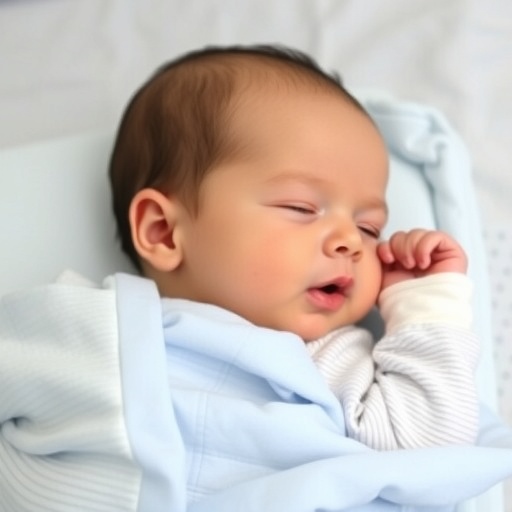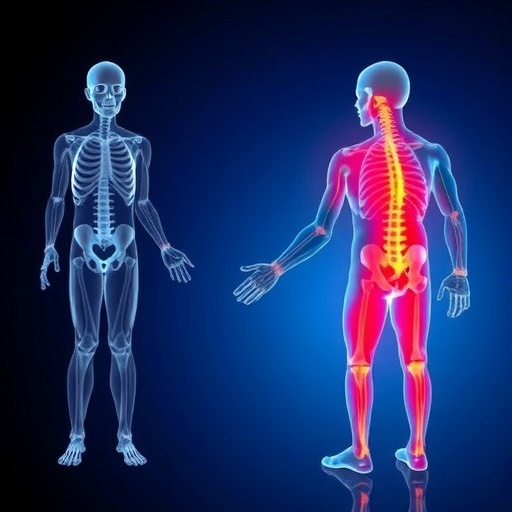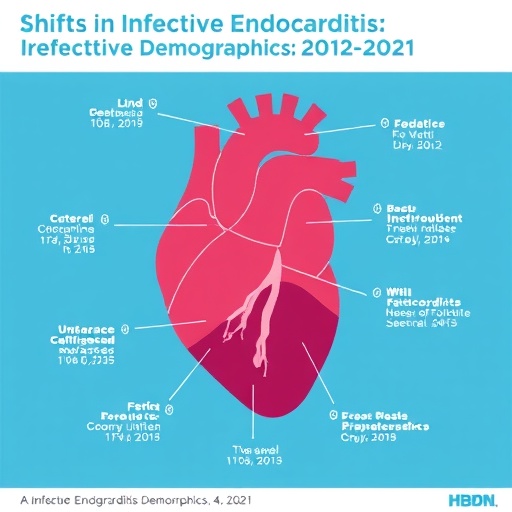In the extraordinary realm of neonatal care, the fragility of infants born at 22 to 24 weeks gestation challenges the most advanced medical interventions, particularly when it comes to surgical wound management. These micro-preemies face a uniquely precarious balance; their underdeveloped physiology predisposes them not only to life-threatening morbidities but also to complications in wound healing. Recent research brings to light pragmatic and nuanced strategies tailored specifically to this vulnerable population, underscoring an evolution in neonatal wound care that diverges significantly from conventional adult protocols.
Premature infants, especially those delivered before 24 weeks, undergo surgeries for conditions directly attributable to their premature state. Yet, their capacity to heal wounds is compromised by immature skin integrity and immune function, increasing the risk of surgical site infections and wound dehiscence—a catastrophic failure of wound closure. This dual threat necessitates a delicate approach to wound assessment and management, prioritizing both safety and efficacy. Contemporary guidance advocates for thorough wound evaluation with an emphasis on debridement techniques that mitigate trauma while optimizing healing potential.
Contrary to aggressive mechanical debridement methods such as deep and sharp removal, which can be excruciatingly painful and largely contraindicated in these patients, enzymatic and autolytic debridement methods emerge as the front-runners. These approaches harness the body’s own enzymes or externally applied agents to gently and selectively remove necrotic tissue. Such methods are not only less invasive but also support the preservation of viable tissue, a critical factor when every cell counts in such premature skin.
Among the arsenal of topical agents, medical-grade honey stands out as a centuries-old remedy reborn through scientific validation. With its acidic pH, high osmolarity, and inherent antimicrobial properties, medical grade honey creates an environment hostile to pathogenic bacteria while simultaneously fostering extracellular matrix formation—crucial for tissue regeneration. Clinical application involves gels infused with honey that permeate the wound bed, facilitating a moist, protective milieu conducive to healing. This gentle yet potent agent bridges natural biochemistry with cutting-edge neonatal care needs.
In cases where wounds present minimal slough, other adjunctive therapies have gained prominence. These include surfactant-based gels, hydrogels, and hypochlorous acid solutions, each optimized for the unique microenvironment within neonatal incubators. Surfactant-based gels, for instance, have demonstrated superiority in biofilm disruption—a formidable barrier to wound healing—while also exhibiting favorable performance in warmed, humidified isolette settings. Remarkably, these gels show dynamic responsiveness, thickening in humid conditions to protect tissue, yet thinning upon exposure to cooler air, facilitating painless dressing changes.
Enzymatic ointments, particularly collagenase preparations, deliver targeted degradation of thicker eschar or slough, making them indispensable for more complex wounds. Their application is refined—a thin, dime-sized layer suffices—minimizing systemic absorption risks while maximizing local effectiveness. Importantly, these ointments maintain function across humidity gradients, offering versatility in fluctuating neonatal environments. The implication is clear: precision medicine tailored to wound composition and environmental context is revolutionizing care.
Central to optimal wound management in the extremely premature is the environment maintained around the wound. Atraumatic silicone-based dressings, such as Mepitel®, provide a gentle interface that shields the wound bed while preserving moisture balance. These dressings not only prevent further injury from adhesive removal but also permit the passage of healing agents like medical honey, creating a synergistic effect. Their recommended duration of use extends up to seven days, reducing dressing change frequency—a significant benefit given the fragility of these patients.
However, caution is warranted in the selection of dressings, particularly those containing silver. While silver has long been heralded for its antimicrobial prowess, its use in neonates is increasingly scrutinized due to cell toxicity and the emergence of silver-resistant bacterial strains—up to 30% are reportedly resistant. Such resistance jeopardizes both efficacy and safety, underscoring the need for judicious use of these agents in neonatal wound care.
Beyond simple, traditional wound care products, research increasingly points to ‘next generation’ bioscaffolds derived from collagen matrices, amniotic membranes, or umbilical cord tissues. These innovative dressings offer bioactive environments capable of modulating inflammation, fostering granulation tissue formation, and accelerating epithelization. While still under clinical investigation, the promise of these biologically derived dressings represents the vanguard of neonatal wound healing advancements.
The wound healing landscape for infants delivered at the cusp of viability demands clinicians to navigate an intersection of immaturity, vulnerability, and infection risk with unprecedented care. The evolution from traumatizing mechanical methods towards harmonious, biologically integrated treatments exemplifies a shift informed by both science and compassion. Such care paradigms not only hold the potential to reduce morbidity but also to improve long-term skin integrity and function into childhood.
In this context, maintaining a humidified incubator environment is crucial. The controlled microclimate preserves skin hydration and prevents desiccation, factors intimately tied to wound healing kinetics. Products like surfactant-based gels capitalize on this environment, enhancing their protective capacities. Additionally, the strategic thermoregulation also influences gel viscosity, a feature ingeniously exploited to simplify dressing application and removal in neonates.
The physiological nuances of premature skin, including reduced collagen content and an immature stratum corneum, complicate healing trajectories. Topical agents that promote extracellular matrix deposition directly target these deficits, helping to reconstruct the fundamental architectural scaffold necessary for robust and functional skin tissue. Medical grade honey’s multifaceted mode of action exemplifies this sophisticated therapeutic target, moving beyond simple antimicrobial effects.
Recent studies have also emphasized the importance of non-cytotoxic dressings that do not exacerbate skin irritation or compromise barrier function. Silicone-based adhesives have demonstrated minimal disruption to epidermal integrity while maintaining secure wound coverage, a critical balance in neonates prone to skin tears or adhesive-related trauma. This consideration is paramount as repeated dressing changes can lead to cumulative skin injury, further complicating recovery.
Furthermore, understanding the microbiome shifts within neonatal wounds informs targeted therapies. Biofilms, complex bacterial communities resistant to standard antibiotics, hinder healing and predispose to infection. Surfactant-based dressings’ biofilm-disrupting capabilities represent an emergent strategy to dismantle these protective niches, restoring wound susceptibility to host defenses and topical agents.
Emerging biomaterials harness nanotechnology and bioengineering to create smart dressings that respond dynamically to wound conditions such as pH, moisture levels, and bacterial load. While their application in neonatal settings is nascent, ongoing research foreshadows a future where real-time monitoring and responsive treatment converge to personalize care on an unprecedented scale.
In synthesizing these advances, the future of wound care in the 22 to 24 week gestational age cohort seems poised for transformation. Balancing antimicrobial protection, tissue regeneration, minimally invasive application, and environmental compatibility constitutes a delicate yet achievable goal. Such integrated approaches promise to enhance survival and quality of life for the most fragile patients.
Ultimately, these pragmatic skin care guidelines inform a paradigm shift—moving “beyond the obvious”—to embrace interdisciplinary collaboration between neonatologists, surgeons, nurses, and wound care specialists. The intricate interplay of biological principles, innovative materials, and clinical acumen underscores the complexity and critical importance of tailored wound management in neonatal intensive care units worldwide.
Subject of Research: Wound care management and skin healing strategies in infants born at 22–24 weeks gestation.
Article Title: Seeing beyond the obvious: pragmatic skin care guidance for infants 22–24 weeks gestational age.
Article References:
Boyar, V., Visscher, M., Lund, C. et al. Seeing beyond the obvious: pragmatic skin care guidance for infants 22–24 weeks gestational age. J Perinatol (2025). https://doi.org/10.1038/s41372-025-02375-1
Image Credits: AI Generated
DOI: https://doi.org/10.1038/s41372-025-02375-1
Tags: advanced neonatal wound care protocolscomplications in wound healing for neonatesdebridement techniques for fragile infantsenzymatic debridement methods for infantslife-threatening morbidities in micro-preemiesmanaging surgical site infections in infantsneonatal skin care strategiesoptimizing healing in preterm infantspremature infant skin integrity challengessafety in neonatal wound assessmentsurgical wound care for micro-preemieswound management for premature infants





